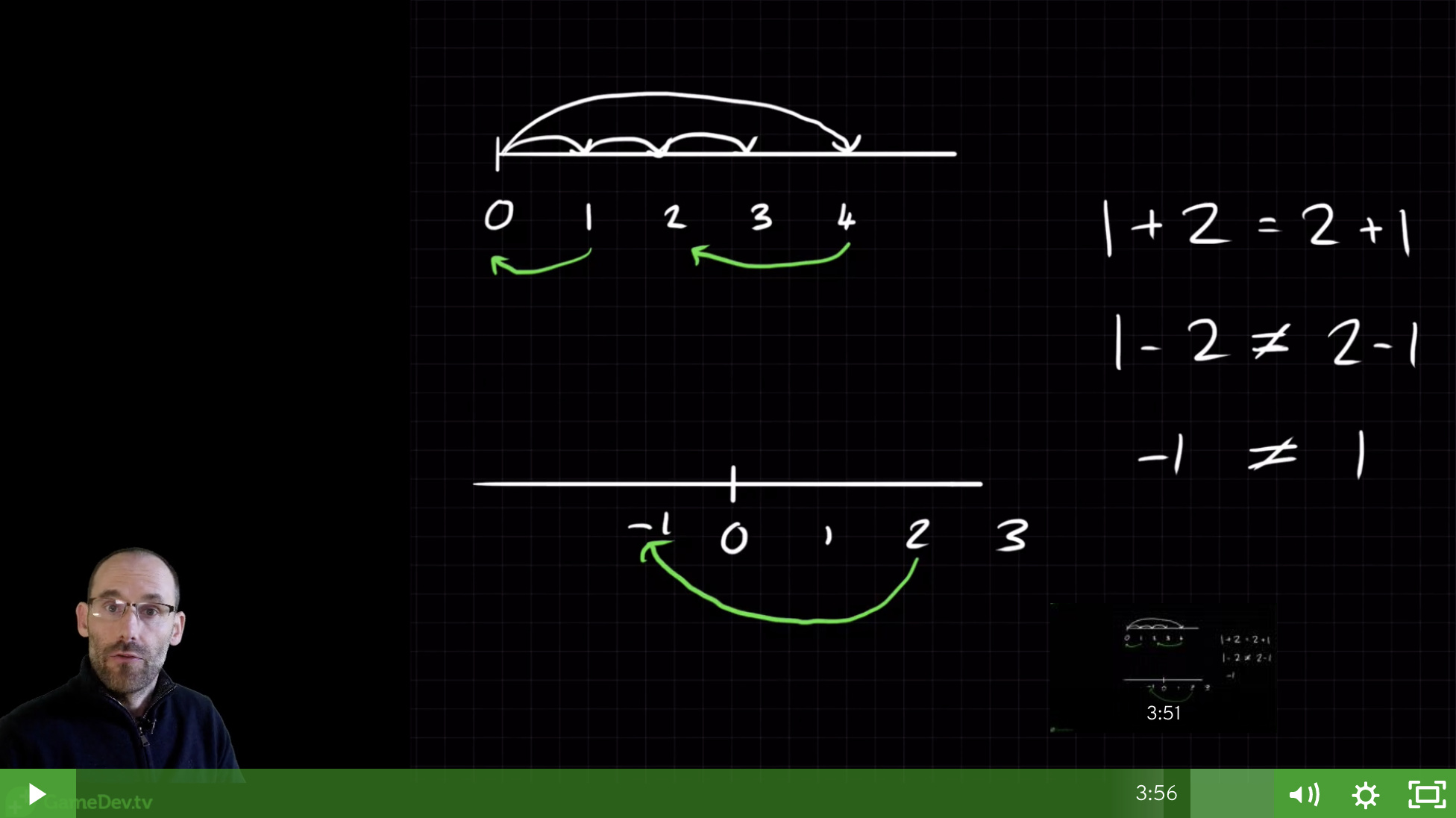At last, the first video is out!
What do you think of the format?


At last, the first video is out!
What do you think of the format?

I’ve just moved my head to the other side so you can see the Unity console!
Thanks @garypettie for bringing this up.
So I followed your advice and played around with this in Godot engine and was surprised to find that GDScript is using 64 bit signed integers and you get quite funky output when you just assume the pow()-function works correctly for both Integers and floats:
Good to know this stuff before it causes weird bugs! Thanks 
The format from the first video looks good.
The bugs and the computer side is very interesting. Not sure how well the concept is explained for people that don’t know this. This might be helpfull for them. https://www.youtube.com/watch?v=N-7tcTIrers
It’s everything I wanted it to be and more 
Hi Ben & fellow game devs. I missed the Kickstarter for this! I don’t usually beg, but I really want to get in on this. I will throw in whatever was needed to qualify. Please just let me know!
I don’t know about Ben’s plans on when the course will be officially released, but it’s only in early access at the moment (for those who backed the kickstarter). I wouldn’t expect it to be long though once Ben ramps up production towards the mid/end of the month.
Thanks for the heads up
I’m away next week, but then plan to hit production hard and release for sale in December.
Looks great! I love the dark background. I love the fact the you started with the basics. I would have started with something more intimidating, but less advanced, like trigonometric identities, limits, or differentiation formulae. That would have gained people’s attention, and attracted them to class. We’ll miss you next week Ben. I don’t talk much, though some think that I do. Talking gives me a headache because I have to think about what am saying and how am saying it. I communicate better in writing. All the best. Cheers!
Seemingly complex Math gives better graphics. I think people generally love Math. However, sustaining that love depends on how one is taught. There’s beauty to Math that goes beyond the abstract, perhaps it’s its implicit natural design, that builds up from the very foundations. Math is in itself, the greatest art form.
I love your graphic, it’s like a combination of numerals, operations, symmetry, combinations and permutations.
tl;dr I think it’s a great idea, and then I go off about algorithms. (Sorry!)
I’m still just getting into all your great courses! This is an area we really need a lot more of, how great to do it. But I did want to just say something here, even if it’s months old perhaps you’ll stumble upon it someday.
One thing I think is really great about math (not just counting problems but graph algorithms, really) is the potential for things that some engines might do but when you can’t handle having their weight (cpu, memory, etc.) – at least for a time – it might be easier to just do a simple opengl kind of thing and do something yourself. (Interactive loading screens or credits, non-standard options/settings, I don’t know, whatever…)
For example, finding the shortest path when there’s objects in the way (putting out points, seeing what’s there, get shortest and keep iterating). We might not think of it because some engine takes care of it, but how would you do it if you wanted to do things the engine doesn’t?
Or what if you just wanted to build your own? The shortest path algorithm seems at first to be only useful for say enemies of different intelligences (and approaches) to find the way to the PC, but when you give it a different context, like say the best ways to move parts of a robotic arm by mapping a physical space to a configuration space (and where “obstructions” are where the various parts of the robotic arm can’t move) and then finding the shortest path in the configuration space, when it maps it over it turns it into the instructions for how the arm moves in the physical space by following the path.
I guess what I’m thinking of is more of an algorithms refresher, rather than just straight math. But I think it could be pretty neat, too: have a course with things like here’s the best ways to by hand programmatically make and fill a cave or building with rooms and levels, or here’s some maze algorithms you may have forgotten, or here’s some ways to generate various objects (random vehicles, ships, people, or generated narration) or create your own environmental paint tools on the fly (filling environments manually can really be tedious), or again for lower level stuff, algorithms to keep your framerate constant by adding things for the cpu & gpu cores to do (like crunch away on a unique quality something the player might experience after a little bit) yet keeping everything at a constant framerate experience.
Ok…got a little off topic there. But I love that this course was made and the potential for future courses seems really boundless!
Thanks!
– Mike
The calculation of ‘E’ as a mathematical constant. Was one of my first math programs written in BASIC on a Pet CBM machine many, many years ago. After 20 or so recursions, I got strange results. The teacher had to explain to me, the limits of computer calculations. I was disillusioned, the mighty computer wasn’t that mighty … Buts since then I’m aware of this problem. 